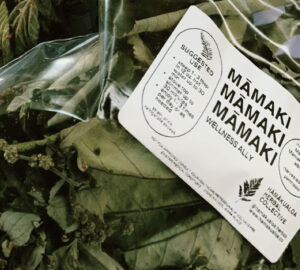Hawaii Department of Health urges everyone to “Check Your Pressure” during American Heart Month
As part of this year’s American Heart Month in February, the Hawaii Department of Health (DOH) encourages everyone to have their blood pressure checked regularly to reduce their risk for heart attack, stroke and other complications. Simple information about blood pressure is now available at CheckYourPressureHI.com.
“February is American Heart Month and a perfect time for all of us to take important steps to reduce risk factors associated with heart disease,” said Health Director Dr. Virginia Pressler. “The good news is heart disease can be prevented by taking simple steps such as checking your blood pressure regularly. If you don’t have an at-home blood pressure monitor, visit your local fire station to have it checked for free.”
According to the DOH Chronic Disease Prevention & Health Promotion Division, one in every three adults in Hawaii has been diagnosed with high blood pressure (also known as HBP or hypertension). A blood pressure reading of 140/90 or more is considered high. Those who already have high blood pressure or other chronic diseases should check their blood pressure at least once a week.
Statistics show that high blood pressure leads to dangerous health consequences:
- 7 in 10 people who have a first heart attack have high blood pressure.
- 3 in 4 people who have a stroke have high blood pressure.
- 3 in 4 people who have congestive heart failure have high blood pressure.
Mortality rates associated with heart disease are particularly high among the Native Hawaiian and Other Pacific Islander population, at 628 deaths per 100,000 residents—compared to 154 deaths per 100,000 among Asian and 167 deaths per 100,000 among White residents, respectively.
This points to the need for greater awareness of the dangers of high blood pressure, especially for population groups who are not getting screened and dying unnecessarily from health conditions related to high blood pressure. To help get the word out, DOH has launched a new website, CheckYourPressureHI.com.
“If you or someone you know has blood pressure levels of 140/90 or higher, make sure you or your loved ones visit a doctor or healthcare professional as soon as possible for life-saving blood pressure control medication,” said Lola Irvin, Chronic Disease Prevention & Health Promotion division administrator. “Your doctor may also recommend lifestyle changes to help get your blood pressure under control.”
Irvin added, “This is a health crisis we can solve, but we must do so with a sense of urgency.”
Those who don’t have a doctor or can’t afford one are encouraged to visit the nearest community health center for assistance. For a list of community health centers in Hawaii, go to http://www.hawaiipca.net/health-centers-in-hawaii/.
In addition to increasing awareness about high blood pressure, DOH manages the following programs to decrease other factors that place people at greater risk for high blood pressure:
- Quitting smoking: The Hawaii Tobacco QuitLine offers free tobacco cessation services, including counseling and nicotine replacement therapies, to anyone trying to stop using tobacco products and e-cigarettes. Call 1-800-QUIT-NOW or go online at HawaiiQuitLine.org.
- Eating healthier: The DOH’s Choose Healthy Now program partners with convenience stores across the state—including 7-Eleven, Aloha Island Mart and KTA Super Stores—to offer healthier snack and drink options for Hawaii residents. Visit ChooseHealthyNowHawaii.com for a list of participating locations near you.
- Exercising more: DOH works with counties to support the implementation of policies and programs across the state that improve opportunities for walking, hiking and biking. Check out HealthyHawaii.com/Get-Active for ideas on how you can take advantage of opportunities for exercise in your community.
- Preventing type 2 diabetes: The DOH’s Prevent Diabetes Hawaii campaign encourages Hawaii residents to take an online Diabetes Risk Test. Visit PreventDiabetesHawaii.com to find out if you are at risk.
For information on how to check your blood pressure and to learn more about lowering your risk for high blood pressure, visitCheckYourPressureHI.com.



